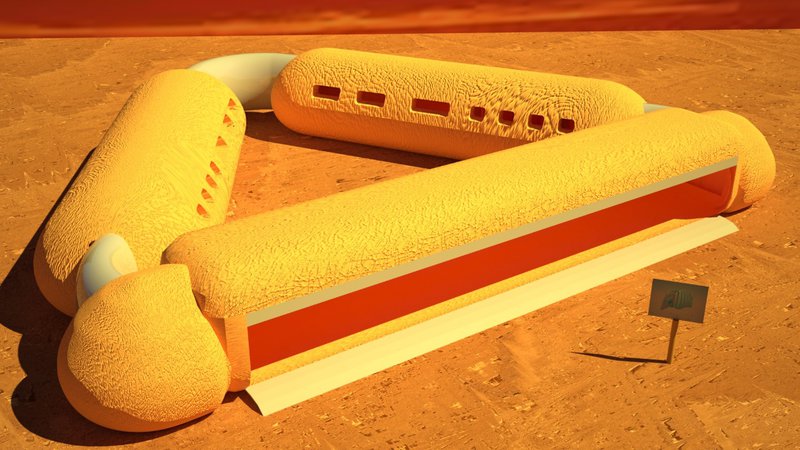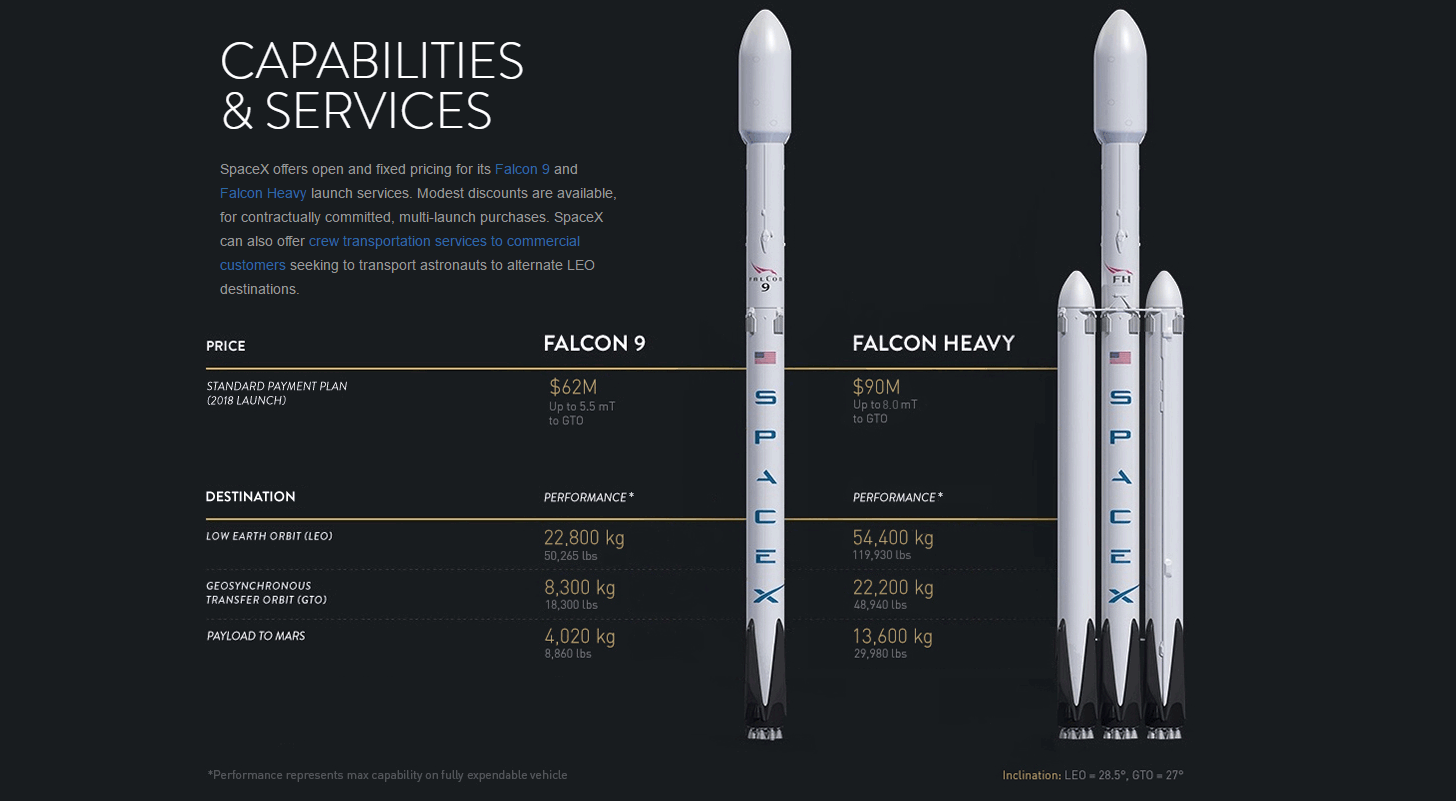PúlsAR Research & Development | Small Spaces, Big Ideas!
Awards & Nominations
PúlsAR Research & Development has received the following awards and nominations. Way to go!
The Challenge | Small Spaces, Big Ideas!
Project HábitAR
HábitAR Project brings a new and innovative solution for the colonization of Mars using 3D printing systems and Martian regolith as raw material. This allows for a great independence of Earth-from resources and a huge decrease in infrastructure costs.

Github Repository:
https://github.com/gaturroleon/SPACE-APPS-2017-HABITAR
Our questions on Reddit
We take advantage of Reddit session & ask for permission to do an complete new HábitAR from zero ground and you told us to "let your imagination run Wild!!"

And we did it, we have left our imagination run wildly!! So we, Team PúlsAR, hope you Like our Project HábitAR!!


INtroduction to project hábitar
Our idea is to gradually and progressively make the extra-planetary housing technology of permanent inflatable domes, which have some disadvantages such as the expensive and late transfer from the earth to the destination planet; Its lack protection from solar radiation; His weakness heavy storms; Its poor thermal and acoustic insulation and its vulnerability to meteorite attacks, to a system that uses the natural resources of the planet in question, such as its regolith, in order to be able to become gradually independent of the earthly shippings and also to improve the aspects mentioned above and underlined , And we explain why:
Currently the transfer of material from Earth to Mars can cost tens of thousands of dollars per kilo (Prices published by Space X and other companies See image 1). If we plan to colonize the red planet in a meaningful way, with a large population and a vast amount of infrastructure, we must try to find a way to gradually become independent of the resources coming from our original planet.

Figure 1: Current SpaceX rates for cargo transport to Mars and nearby orbits.
If we remember the European settlers in America, who had already developed very advanced technologies of construction in their homeland, they also resigned their knowledge and techniques because they knew that the transfer from Europe of them to America would be very expensive and they began to build with indigenous resources. The first buildings were the rudimentary forts and wooden houses, material from trees and very abundant in America and Europe, from where it was taken ancient reference to finally develop and build the durable colonial buildings that today endure and we all know. See Figure 2. 
Figure 2 Native and European people, together and living inside native-resources made Hábitars
In this new scenario, we must think in the same way, as the European settlers thought: Relate, for example, the Martian land with lands like the "Tierra colorada" (See figure 3) that is found in the north of our country, Argentina, which has minerals such as Limonite, very similar to Iron oxide III that is in the planet Mars, and experiment with it, extrapolating the results. Use the raw material of the colony along with rustic techniques to initiate the colonization until the transportation systems are so advanced that they allow the transfer of the necessary resources in an efficient way in some future, as it is today transatlantic sea and air transportation.
Figure 3: Typical red dirt road in the province of Misiones, Argentina.
We take as an example the only current objective of the human species, the Planet Mars, as a reference to be based on this simulation. Our idea is, in simple words, to return to the archaic technologies of our civilization by building habitats of Martian regolith that, although we still do not know their specific characteristics, they do closely resemble terrestrial minerals as mentioned above.
This system will consist of a large multi-use machine with a big variety of technologies and capabilities like type 3D building techs, continuous track to carrie heavy weights and CNC selecting tools system, even a ground flatten system (figure 4), among others, that will be carried in a previus mission and later the crew will arrive in a subsequent mission so the workmanship can assemble the machine and put it to work. The simulation in Hawaii will be done in the same way.
Those selected to train on the North American island will disassemble, assemble and put into operation this multi use printer, following stricted protocols simulating been in mars, which will build their habitat with the red earth, so characteristic of that volcanic zone where this experiment is carried out. In the main document we detail our planning for the HabitAR mission.

Figure 4: This is our new Gound Flatten system, one of the capabilities of the Multi use Martian builder Machine. It is useful to prepare and correct uneven ground and leave it ready to build on top of it.
Secondly, we are concerned with increasing protection against solar radiation through a habitat that not only increases the refraction of this threat, but also protects the levels of solar storms, thus preventing trainees from practicing this simulacrum and as a consequence settlers should not worry about this climatic factor.
The formation of these habitats of refractory material, iron minerals and volcanic rocks, all with magnetic properties, together with their thick double-purpose walls (Refracting radiation and internal pressure support) guarantee a perfect protection against these phenomena. On the other hand, trainees should practice in a darker module and not so friendly to the eye. However, we consider more important the protection of settlers than their emotional well-being, since it is assumed that people who travel are trained professionals and usually have military training and great psychological and physiological preparation.
Math & Physics
Next, we have developed the simulation to know the shape and thickness suitable for our HabitARs. Although we do not know with certainty what the Martian surface or its rocks actually are, we can extrapolate results obtained in the earth using similar materials, as they do in HI-SEAS, Hawaii, and use as reference the mechanical properties of the Red clay.

In this figure you can observe the thickness we need to maintenance the high pressure.
Some Renders of our HábitAR

Two Batchrooms (Duplication is very common in aviation industry for inconvinience)
This is the kitchen. All made by our team, each furniture and module.

Here are the Bedrooms with the Wardrove-Bed that we design for save space and our Chair and Desk designs.

The dinning room.
Layout
One of the Layouts: This is the Left HábitAR
The first refuge will be the main Habitat and will have the 6 rooms, thepantry, kitchen and a dining room.
here are some extra stuff
sand foundry
This is a brand new way to print structures with sun energy and sand.
our local judging
Here we are exposing our 4 minutes topic of our Project HábitAR
Resources
Resources & bibliography
RESOURCES PROVIDED BY NASA
Centro de experimentación en Hawái https://hi-seas.org/
Características del Hab actual de Hawái https://hi-seas.org/?p=1278
Desafío /challenges/ideate-and-create/small-spaces-big-ideas/details
3D Model of Curiosity Rover /challenges/ide...
Our Own Resources
Planet Mars:
Documental sobre marte: https://youtu.be/VvmKgu2pXyk
Comparación tierra marte https://es.slideshare.net/hfaa62/comparando-suelos-de-la-tierrt-m
Chimeneas con circulación de fluídos en Marte https://www.scientificamerican.com/espanol/noticias/curiosity-descubre-chimeneas-por-las-que-circulaban-fluidos-en-marte/
Elaboración de suelos fértiles en Marte http://blogthinkbig.com/como-de-fertil-y-cultivable-es-el-suelo-de-marte/
Colonización de Marte https://es.wikipedia.org/wiki/Colonizaci%C3%B3n_de_Marte#Radiaci.C3.B3n
Sobre Marte https://es.wikipedia.org/wiki/Marte_(planeta)
Atmósfera de Marte https://es.wikipedia.org/wiki/Atm%C3%B3sfera_de_Marte
Extracción de agua en marte http://www.mars-one.com/faq/health-and-ethics/will-the-astronauts-have-enough-water-food-and-oxygen
Todo sobre Marte por la NASA https://mars.nasa.gov/
Posibilidades de perclorato https://actualidad.rt.com/ciencias/view/98239-perclorato-marte-combustible
Perclorato en Marte https://observatori.uv.es/los-problemas-del-perclorato-en-la-colonizacion-de-marte/
Más Hallazgos de Perclorato https://culturag34c.wordpress.com/2016/10/27/hallazgo-de-percloratos-en-marte/
Mars 3D printing:
Impresión con Azufre https://www.youtube.com/watch?v=v4IbS42D8jk
Desafío habitáculos 3D https://www.youtube.com/watch?v=KKPtMjUEnX8
Concurso sobre hábitat marte https://www.nasa.gov/3DPHab/
Charla sobre herramientas en marte en 3D https://www.youtube.com/watch?v=sDfh_IKFGz0
Mars Rockets
Nave orión https://es.wikipedia.org/wiki/Ori%C3%B3n_(nave_espacial)
Lanzador Ares https://es.wikipedia.org/wiki/Ares_I
Proyecto Constelación https://es.wikipedia.org/wiki/Proyecto_Constelaci%C3%B3n
Materials and constructions from clay:
Habitats temporales o HAVEN: http://www.latam.discovery.com/ciencia/imagenes/habitats-impresos-en-3d-para-la-vida-en-marte/
Documental sobre construcciones de barro https://www.youtube.com/watch?v=5BxcRVdWaRc
Tierra colorada https://es.wikipedia.org/wiki/Tierra_colorada
Arcilla https://es.wikipedia.org/wiki/Arcilla
Mineral de la tierra colorada https://es.wikipedia.org/wiki/Laterita
Mineral que se asemeja a la tierra de marte https://es.wikipedia.org/wiki/Limonita
Funcionamiento de altos hornos https://docs.google.com/presentation/d/1CdUGk5-aclM-nVuT81P5cmbv0zUzGu8c4hTfJh0N_ts/embed#slide=id.i34
https://es.wikipedia.org/wiki/Alto_horno
Fábrica movil de ladrillos https://www.facebook.com/interestingengineeringvideos/videos/1976955972527456/?hc_ref=NEWSFEED
Sources of Energy
Energía nuclear vs energía solar https://www.youtube.com/watch?v=Z6rilA4uTlQ
RTG energía nuclearhttps://es.wikipedia.org/wiki/Generador_termoel%C3%A9ctrico_de_radiois%C3%B3topos
Eficiencias energéticas https://www.youtube.com/watch?v=0c4xk5dB014
Cómo funciona una central nuclear https://www.youtube.com/watch?v=4A3fFSlAo-c
Video sobre Uranio https://www.youtube.com/watch?v=p0cZktr1g5s
El futuro de la energía nuclear http://www.yosoynuclear.org/index.php?option=com_content&view=article&id=60:el-uranio-como-combustible-nuclear&catid=11:divulgacion&Itemid=22
Explicación científica con cálculos sobre la energía Nuclear http://recursostic.educacion.es/newton/web/materiales_didacticos/energia_nuclear/energia_nuclear/problema.pdf
Energía solar fotovoltaica https://es.wikipedia.org/wiki/Energ%C3%ADa_solar_fotovoltaica
Constante solar https://es.wikipedia.org/wiki/Constante_solar
Communication
Las comunicaciones con ISS http://www.esa.int/esl/ESA_in_your_country/Spain/Las_comunicaciones_con_la_Estacion_Espacial_Internacional
Computación cuántica https://hipertextual.com/2013/04/red-de-comunicaciones-cuanticas-con-la-iss
Ascensor Marciano http://danielmarin.naukas.com/2013/02/06/el-ascensor-espacial-autopista-hacia-el-cielo/
Games
Take on mars: Juego de simulación marte https://www.youtube.com/watch?v=TRLWO8POCCI
Software
Autodesk Autocad 2017
Microsoft Word 2017
3D max
Corel Draw 13
Solid Work 2016
Githup Platform
Adobe Photoshop
Adobe Premier Pro
Dropbox
Google translate (Very important)
CONTACT
YouTube Channel: https://www.youtube.com/channel/UCoKyJFEm9Vasxa2_w...
Facebook Page: https://www.facebook.com/PulsarID/
e-mail: leonjuanemilio@gmail.com
SpaceApps is a NASA incubator innovation program.
